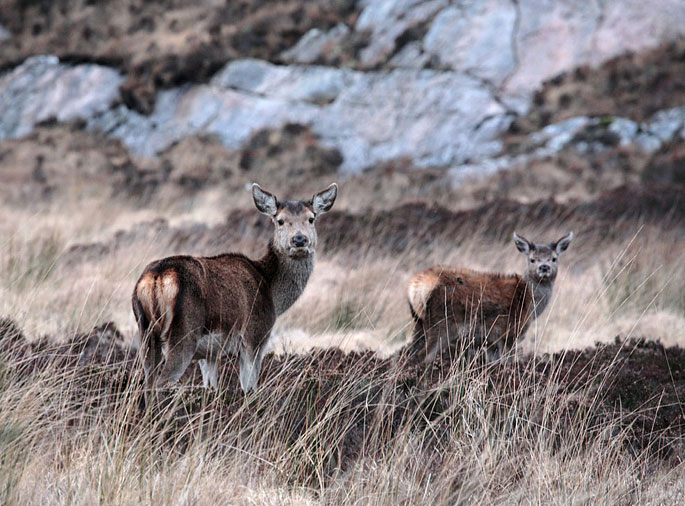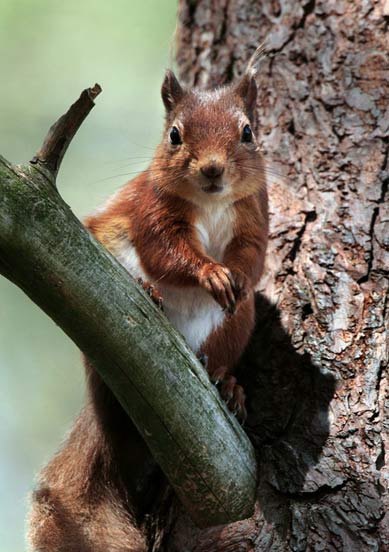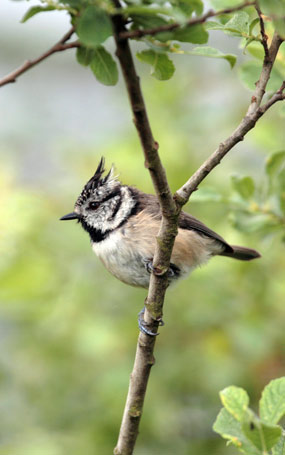the Caledonian pine forest
Scotland is the source of many of my favourite landscape images. It is only a hour by plane from London, or a day by road, so I am trying to spend more time there and explore the region in greater depth. One of my objectives is to photograph the ancient Caledonian pine forest. This covered most of Scotland at one time but has gradually been felled, leaving open moorland and commercial timber areas covering most of the country. I read a few years ago that the location of the remaining pockets of ancient forest was kept secret, but this seems to have changed, perhaps because conservationists have realised that public awareness and support is the only way to protect nature in the longer term. An internet search now gives a lot of useful information on where to go. I spent a day in the Abernethy Forest area around Loch Garten. The trees here are huge compared to the commercially grown spruce, and far more varied and interesting in form. The forest floor is covered with heather, which is flowering at this time of year, and moss. This rich undergrowth seems to be a result of the very high rainfall, and reminds me of the temperate rainforest on the western coast of Canada.

scots pines
The long winters in the north of Scotland make life tough for many creatures but the native red deer thrive here. The archaeological record shows they survived in the British Isles throughout the last ice age. At that time they had natural predators such as wolves, but all the wolves in Britain were shot a long time ago and now deer are protected by law, so not surprisingly their numbers are on the rise. They are sadly now blamed for road accidents, damage to forest and for forcing out other species. In particular they are being blamed for the failure of the natural pine forest to regenerate because they eat young trees. There may be some truth in that, but it is possible to protect young trees from deer as the Corporation of London does in Epping Forest. Of course it's expensive on such a large scale as needed in Scotland, but the right thing to do is surely to help both the forest and the deer, which are equally a part of the country's natural heritage.
I saw just one herd of deer on my early trips to Scotland, but recently in the north-west, around sunset, I have seen a lot of them. The 100-400IS gave some good images of the deer, but next time I will bring the 500F4 which should be even better.

red deer, Sutherland
I spent a day in the Sutherland area, in the far north-west of Scotland. Sutherland derives is name from the Norse Suderland. To the Vikings who occupied Shetland, Orkney and the far north, this was the southern boundary of their territory. I stayed overnight in Ullapool, the only sizeable town nearby and having the last supermarket for about 150 miles. Its harbour gets some shelter in Loch Broom. Heading north to Durness the rocky shoreline is exposed to the Atlantic and is regularly blown by gales. Clouds and rain race across the sky from the west. Landscape photography is not the slow, peaceful occupation some might suppose when light changes as fast as it does here.

red squirrel, Abernethy Forest
Glen Affric
Glen Affric has another large area of virgin Caledonian pine forest. It is often hailed as the most beautiful glen in Scotland. I have wanted to visit Glen Affric for some time, and finally had the chance to spend a couple of days there at the end of August 2007. At this time of the year the heather is in bloom, with a carpet of tiny pink flowers. The silver birch is showing a few yellow leaves, although the full autumn colors will not come to the glen for another month. The weather was, for Scotland, pretty good - a few hours of sun each day and an occasional shower. This is the peak time of year for midges. These small biting insects home in on exhaled carbon dioxide. If a breeze is blowing or you keep moving they lose the scent, However I like to take my time setting up a tripod, changing lenses, and reviewing shots, and if the wind drops they can attack in huge numbers and ruin the shoot.

Scots Pine and Loch Affric
On the first day I was in the lower part of the valley by the River Affric as it flows towards the village of Cannich. The area is accessible by well-marked Forestry Commission paths starting near the waterfall at Dog Falls. The paths follow the river for a way, then cut through the pine forest, passing some high viewpoints and the small but picturesque Coire Loch.
On the second day I went further up the valley to Loch Affric. The landscape opens out here with a broad undulating valley surrounded by high mountains. The Scots pine grows in small copses, and as lone trees. Walking through the valley, there seems to be a new perspective of trees, mountain and loch appearing every few paces. You feel there are always more shots to get if only you had more time. On this occasion the light was often not ideal though. The sun arrived quite late in the day when I was near to the eastern end of the loch, and therefore looking along it to the west, and shooting back into the sun.

crested tit
Early in the day I spotted an impressive bird of prey perched on a pine tree. It looked like a golden eagle - they nest in this area. But the photo I have of it is not clear enough to be sure it wasn't something else like a sparrowhawk. There were a lot of smaller birds and I was able to get good shots of chaffinch and crested tit to add to my wild birds collection. I was using the 100-400IS for that, the 500L being rather heavy for a day's hiking. I'm thinking that there might be a better lightweight telephoto setup than 5D+100-400, perhaps adding the newly announced Canon 40D to the bag, which I would keep on the telephoto lens. This will avoid so many lens changes and ensure I am ready when wildlife appears.